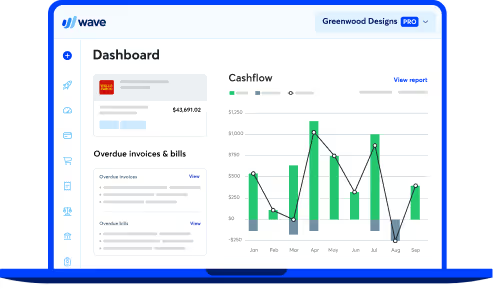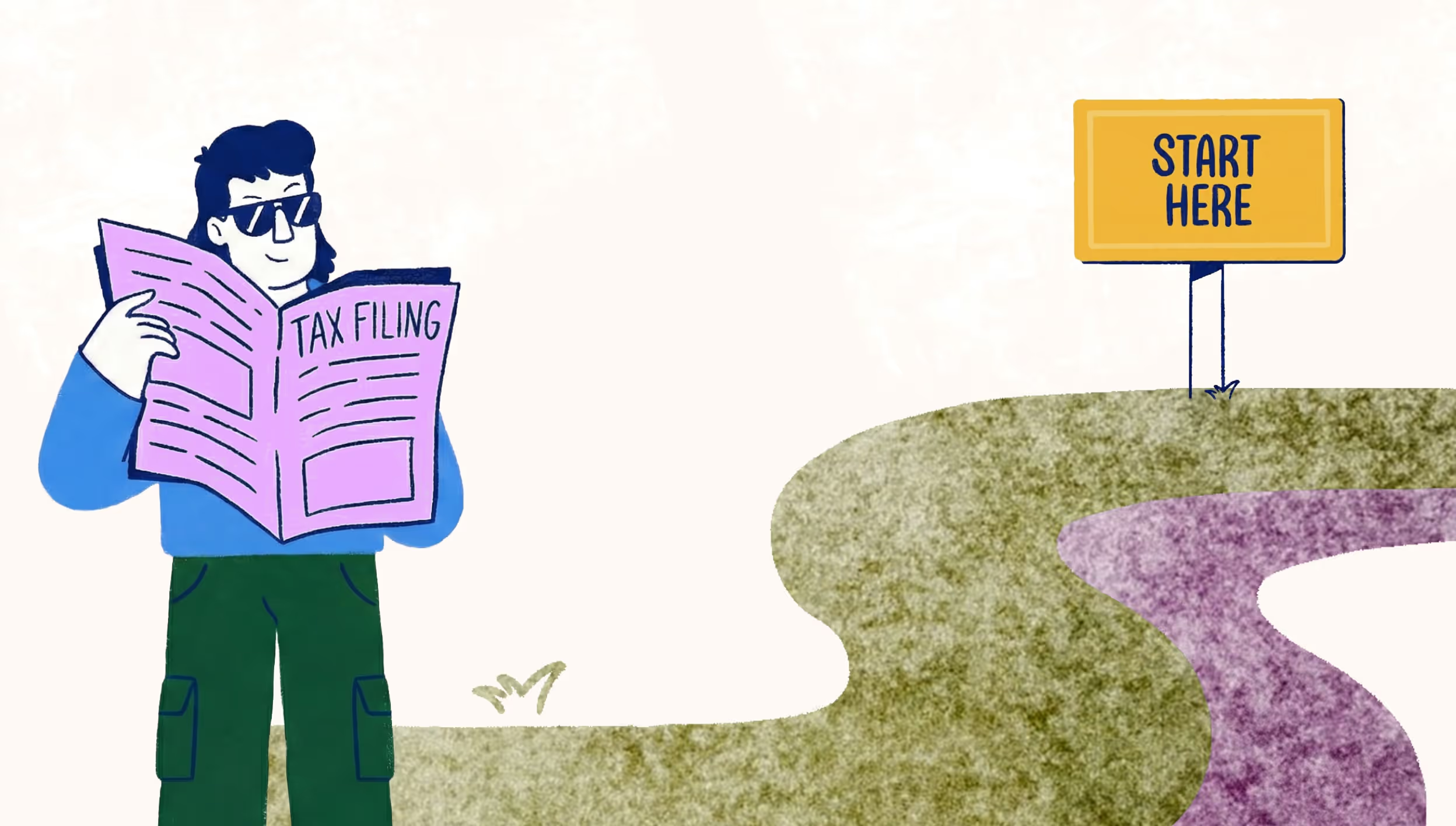
What is accrual basis accounting and how does it work?
The method of accrual basis accounting records your financial transactions based on when they’re incurred, not when cash is exchanged.
Sounds pretty logical, right? It is—if your business meets certain criteria.
Wondering if yours does? Keep reading.
By the end of this article, you know what accrual basis accounting is, how it works, if it’s better than cash basis accounting, and, drum roll, please—if it’s right for your business.
What is accrual basis accounting?
Accrual basis accounting is the standard for various types of businesses. To put it simply, it’s a method of accounting that records your financial transactions based on when they’re incurred. This means that both revenue and expenses are recognized when they’re earned, and not when the form of payment is received.
Let’s break it down.
You own a shop filled with shelves of inventory that aren’t sold right away (like those polka-dot bikinis you had to order in February 🥶). In this scenario, accrual basis accounting would let you track the following: your inventory that hasn’t sold, any inventory that has been purchased, and your sales accurately. With other methods, your left only tracking your immediate cash flow.
However, with accrual based accounting, you get to see the value and costs of goods sold, even on the items that haven’t moved off the shelf. Also, if you purchased items from a supplier via credit, the expense would be recognized when your shop receives them (aka: accrues them), even if you haven’t paid for them yet. This “value of goods” is recorded as an expense, giving you a better sense of the profitability and financial health of your business.
Another scenario for the same business would be accepting credit card payments.
For example, it’s July when our skin is burnt and sticky—aka the perfect time for a sizzlin’ sandy beach. Those bikinis start to fly off the shelf faster than the chocolate ice cream cone that’s melting on your freshly-pressed, white linen shorts. Your happy customers have made their polka-dotted purchases via their credit cards, and with accrual accounting, you don’t have to wait for the payments to hit the bank. Instead, you can track those sales right away.
(Then quickly create a concoction of one part dish soap and two parts 3% diluted peroxide to remove that chocolate stain. 🫧 A process that’s much more difficult than accrual accounting, if we do say so ourselves.)

How does accrual accounting work?
Now that we’ve got the definition covered, let’s answer the question: how does accrual accounting work?
Let’s start with journal entries. As a refresher, journal entries refer to how you record your financial transactions. With accrual accounting, you simply record these transactions when the good or service is provided instead of when the payment is made or received. This is also true for your debts and any payments due.
Accrual accounting follows something called the “matching principle.” This means that all revenues and expenses are to be recorded in the same period. It also combines the cash that’s going in and out of the business, resulting in a more accurate view of your short and long-term finances.
What is an accrual?
When we’re talking accounting, an accrual refers to the process of recording any income or expenses when they actually occur.
That means you count the income as you do the work, provide the service, or sell the product. So, let’s say you’re an RMT who’s provided a 30-minute massage for a client. In this scenario, you don’t have to wait until the end of your 30-day invoice period or until you’re actually paid to record your payment. You can do that right away to get a better sense of the health of your business. 🎉

Accrual accounting vs. cash: What's the difference?
Accrual accounting isn’t the only way to track what’s going in and out of your business. There’s also cash basis accounting: a method that recognizes cash only when it’s received, not earned.
In a way, it’s kind of the opposite of accrual accounting.
Let’s break the differences down. 🤓
- Accrual basis accounting is popular: Most businesses use accrual accounting, and if your company has an average revenue of $25 million or more over three years, it’s actually a requirement. (No wonder: imagine counting all that cash?)
- Accrual accounting supports problem-solving and transparency: With accrual accounting, you get a better sense of the financial health of your business. You can track what’s going in and out, like invoices and payments, to better manage your cash flow.
On the flip side, cash basis accounting is better suited for positive cash flows. Sure, it can show you the cash you have on hand, but for long-term planning or to explore opportunities for growth, you’ll want something a bit more detailed. - Cash basis accounting is more niched and “now” focused: Typically, it’s used only by sole proprietors, small companies, or by those who deal with cash only, and/or do not have inventory to manage. It lets them see the amounts they’re dealing with at the moment, not over periods of time.
Want to learn a bit more about the alternative of cash basis accounting? Check out this article for more facts.
Accrual accounting vs cash: Which method is best?
Decisions, decisions. Quite honestly, we thought about making a Buzzfeed-esque quiz to help you decide, but the answer isn’t up to us (or an algorithm).
It’s up to you and how you do business.
That said, we can give you some facts, like this: if you have inventory, accrual accounting is required—no matter the size of your business or the revenue you bring in.
And this: because lots of businesses sell their product and services using credit, accrual accounting is essential to recording revenue from the point of sale, not just when the money arrives in the bank.
Lastly, accrual accounting is preferred by banks, especially if you’re looking for a loan to support or grow your business. It helps them get an accurate view of your stability and how you manage debt.
The bottom line on accrual basis accounting
The bottom line on accrual basis accounting is that although it’s a bit more complex than the alternative of cash basis accounting, it’s an essential way to track what’s going in and out of your business. Plus, it helps you accurately assess your company’s financial health: now and in the future. And keeping your business nice and healthy is what Wave is here for. Whether you need a hand streamlining your accounting, or an experienced pro to help you out with bookkeeping, we’ve got the tools to help. You’ve got this.
(and create unique links with checkouts)
*While subscribed to Wave’s Pro Plan, get 2.9% + $0 (Visa, Mastercard, Discover) and 3.4% + $0 (Amex) per transaction for the first 10 transactions of each month of your subscription, then 2.9% + $0.60 (Visa, Mastercard, Discover) and 3.4% + $0.60 (Amex) per transaction. Discover processing is only available to US customers. See full terms and conditions for the US and Canada. See Wave’s Terms of Service for more information.
The information and tips shared on this blog are meant to be used as learning and personal development tools as you launch, run and grow your business. While a good place to start, these articles should not take the place of personalized advice from professionals. As our lawyers would say: “All content on Wave’s blog is intended for informational purposes only. It should not be considered legal or financial advice.” Additionally, Wave is the legal copyright holder of all materials on the blog, and others cannot re-use or publish it without our written consent.


























